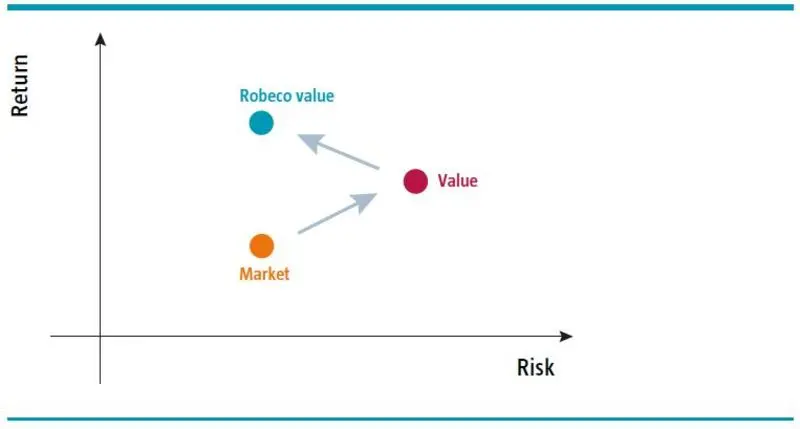Disclaimer
The information contained in the website is solely intended for professional investors. Some funds shown on this website fall outside the scope of the Dutch Act on the Financial Supervision (Wet op het financieel toezicht) and therefore do not (need to) have a license from the Authority for the Financial Markets (AFM).
The funds shown on this website may not be available in your country. Please select your country website (top right corner) to view more information.
Neither information nor any opinion expressed on the website constitutes a solicitation, an offer or a recommendation to buy, sell or dispose of any investment, to engage in any other transaction or to provide any investment advice or service. An investment in a Robeco product should only be made after reading the related legal documents such as management regulations, prospectuses, annual and semi-annual reports, which can be all be obtained free of charge at this website and at the Robeco offices in each country where Robeco has a presence.
By clicking Proceed I confirm that I am a professional investor and that I have read, understood and accept the terms of use for this website.
Quantitative investing
Value factor
Equities realize better returns if their current value is higher than their current price. A value strategy makes use of valuation ratios to select stocks that are attractively priced relative to their fundamentals.
The price-to-book and price-earnings ratios are both frequently used. Stocks with low prices relative to their fundamentals are expected to appreciate in the future to properly reflect the real value of the company. However, the pitfall here is that an increased risk of insolvency can be the reason for a low valuation. A company that has an outdated business model, for instance, runs a greater risk of becoming insolvent, and its stock price will reflect this by having an apparently low valuation relative to its book value.
Figure 10. Improved risk-return ratio with Robeco's Value factor approach

Source: Robeco, Quantitative Research, 2014
Robeco’s approach to value investing is to make stock-selection adjustments that take a higher level of risk into account. This means that stocks that are indeed undervalued are selected, in contrast to companies whose low valuation merely reflects their higher level of risk.















